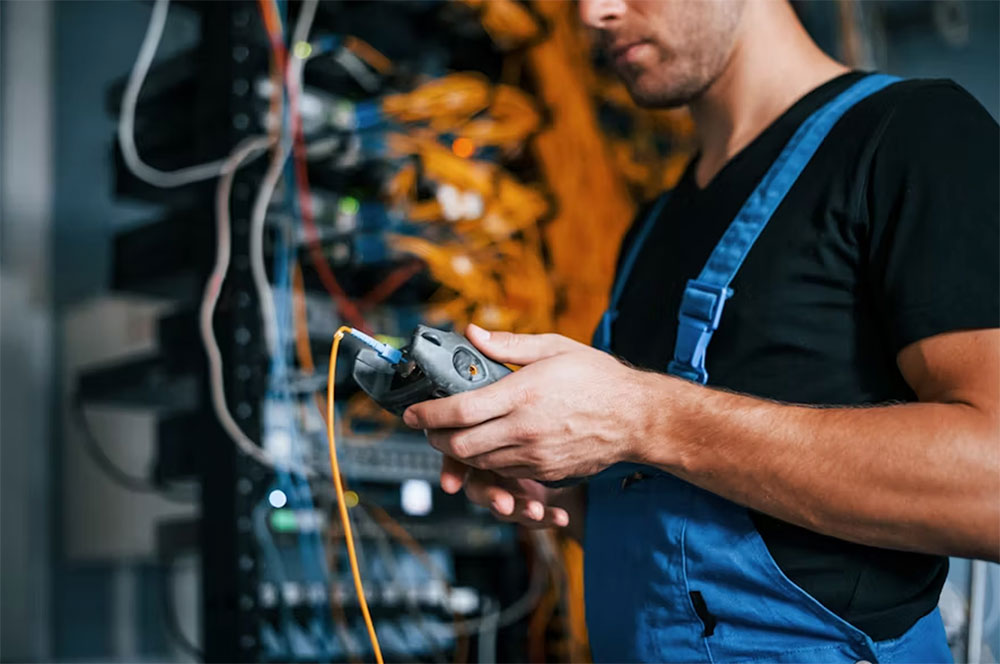In boardrooms across the capital, digital transformation tops every agenda, yet few executives realise that its success hinges on the first few metres of physical infrastructure inside their premises. The move from on-prem servers to multi-cloud, from legacy telephony to unified communications, from static offices to smart, sensor-rich workplaces—all of it depends on a resilient cabling backbone. That is why organisations serious about performance, compliance and sustainability start by investing in structured cabling by ACCL before commissioning the next wave of software or services. Place the right copper and fibre in the ground and everything else—AI analytics, 8K video collaboration, real-time IoT telemetry—has room to breathe. Ignore it, and the most sophisticated technology stack will stumble at Layer 0.
A Single Standardised Platform for Every Digital Workflow
Structured cabling delivers something ad-hoc wiring never can: predictability. By segmenting a building into clearly labelled pathways and consolidation points, engineers know exactly where any service originates and terminates, whether it is a cloud fail-over link, a PoE-powered access point or a building-management sensor. That transparency slashes mean time to repair and allows routine moves, adds and changes to be executed without overtime approvals or fire-drill risk assessments. Above all, it future-proofs the estate; the same horizontal run that carries 1 Gbps today can be re-terminated for 10 Gbps or even 25 Gbps tomorrow without knocking holes in plasterboard.
Performance Headroom That Pays Dividends Every Day
In London’s high-density offices, bandwidth demand doubles roughly every 26 months. Video conferencing has shifted from 1080p to 4K; CAD files once shared on portable drives now sync continuously to cloud render farms; security cameras push analytics-ready streams to AI engines at the edge. Cat6A copper and OM4 multimode fibre, installed to strict bend-radius tolerances and field-certified with Fluke testing, give generous headroom for these workloads. Users see it as snappier log-ins and crystal-clear calls; finance teams see it as hard savings on troubleshooting hours and lost productivity.
Resilience, Compliance and Cyber-Security in One Stroke
The clean, labelled pathways of a structured system are not just tidy—they are auditable. Regulators and insurers increasingly request evidence that physical layers are controlled to mitigate both accidental and malicious disruption. Properly segregated routes, locked cabinets and tamper-evident seals satisfy ISO 27001 auditors while proving to cyber-underwriters that the organisation takes defence-in-depth seriously. Crucially, structured cabling simplifies segmentation: patch-panel documentation shows exactly which sockets feed a PCI-DSS payment enclave and which feed a guest Wi-Fi VLAN, reducing the blast radius of any breach.
Energy-Efficient by Design
ACCL’s modern installs weave sustainability into every tray and rack. Shorter, right-sized patch leads cut copper tonnage; vertical cable managers keep airflow channels clear so CRAC units can run warmer water without risking silicon throttling. With electricity costs volatile and ESG metrics making their way into loan covenants, an efficient cabling topology becomes an operational hedge as well as a reputational asset.
Case Insight: How a City Law Firm Unlocked Hybrid-Working Agility
A 135-year-old legal partnership in EC3 faced a dilemma: keep renewing untouched Cat5e links or halt operations for a full refit. ACCL proposed a phased structured-cabling rollout, working two floors at a time during weekend windows. By the end of phase one, the firm had 10 Gbps copper to every hot-desk and fibre risers capable of 40 Gbps core throughput. When pandemic-era hybrid policies arrived, the network absorbed double the VPN traffic without a hint of saturation. Remote counsel now review case video evidence in real time, and document-management syncs complete minutes rather than hours before a courtroom appearance.
Smart Buildings, IoT and the Convergence Dividend
The newest office schemes in Canary Wharf specify a converged cabling infrastructure from day one precisely because every building subsystem—lighting, HVAC, access control, even lifts—now speaks TCP/IP. A single standards-based backbone means less material, quicker snag-free commissioning and fewer parallel maintenance contracts. In retrofit projects, ACCL leverages zone cabling so facilities teams can drop a PoE lighting hub or environmental sensor at short notice without disruptive ceiling works. Each IoT node draws power and data over the same four-pair, simplifying ongoing carbon reporting and lifecycle management.
Total Cost of Ownership: Numbers That Tell Their Own Story
Executives sometimes balk at the capex line for a building-wide rip-and-replace, yet lifecycle analysis is unequivocal. Gartner research suggests that moves, adds and changes can consume up to 14 percent of a network’s operating budget when cabling records are flaky; structured cabling slashes that to low single-digits. Meanwhile, downtime attributed to cabling faults drops sharply—one UK logistics hub recorded a 93 percent fall in rack-level incidents after ACCL completed its structured refresh, freeing IT staff to focus on value-adding analytics rather than firefighting.
Managing Growth Without Growing Pains
Tech stack roadmaps rarely stand still. Today it might be multi-gigabit Wi-Fi 7; tomorrow, lidar-equipped cobots patrolling a warehouse. Structured cabling is versatile enough to host whatever comes next. Need to migrate a server row to liquid cooling? Fibre trunks already in place reroute traffic in seconds. Planning an edge AI cluster? The backbone is already rated for 25 Gbps. Because the documentation is meticulous, capacity planning transforms from guesswork to evidence-based modelling.
Why ACCL? Proven Methodology Meets Rigorous Quality Assurance
ACCL’s engineers hold BICSI and CNCI accreditations, follow ISO/IEC 11801 design guidelines to the letter, and back installations with manufacturer warranties that often extend to 25 years. Every link is scanned end-to-end, every cabinet photographed and indexed in a digital twin provided to the client’s IT and facilities teams. Post-handover, the same specialists remain on contract to handle seasonal churn, ensuring the documentation stays synchronised with reality rather than gathering dust in a binder.
Conclusion: Secure the Physical Layer, Accelerate the Digital Vision
It is tempting to chase the latest SaaS platform or AI chatbot, but nothing derails digital ambition faster than a bottleneck hidden in the riser cupboard. By adopting a meticulously planned, standards-compliant structured cabling system—designed and delivered by ACCL—London enterprises gain a low-maintenance, high-resilience foundation that scales effortlessly with innovation. Strategic leaders who grasp this principle can roll out new technologies faster, meet governance obligations with less friction and demonstrate tangible ESG progress, all while giving employees the seamless connectivity they expect.
Invest first in the infrastructure you cannot see, and you will unlock the capabilities everyone else is talking about. In a city where milliseconds translate into market share and reputation rests on uninterrupted service, the smartest move you can make today is to ensure your physical network is ready for whatever tomorrow brings.






